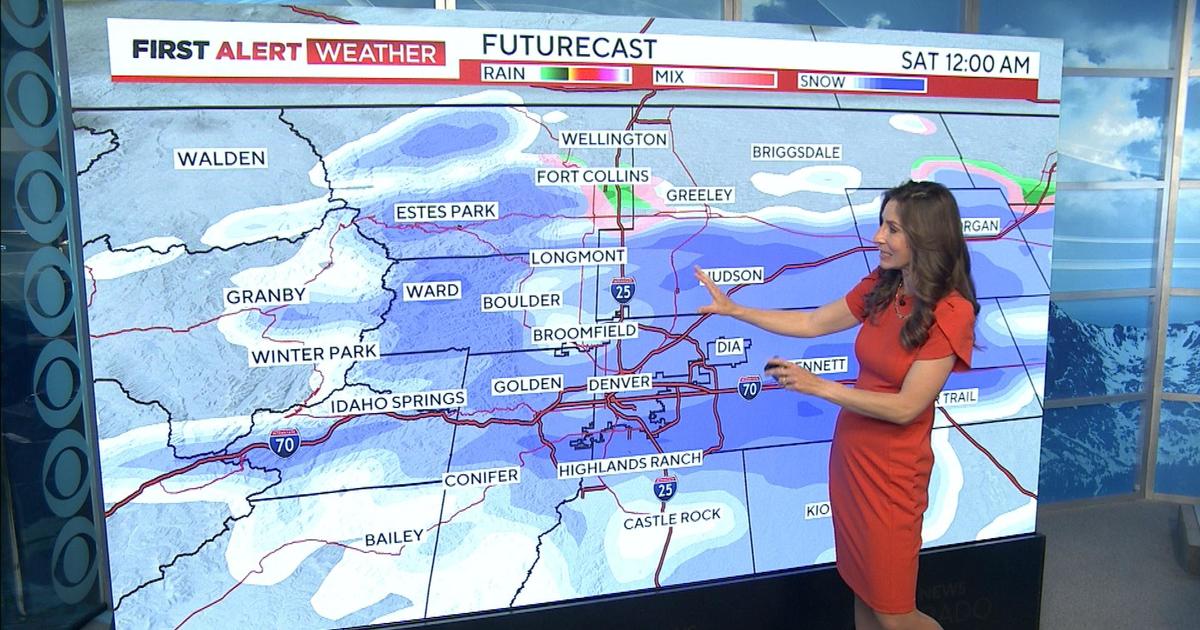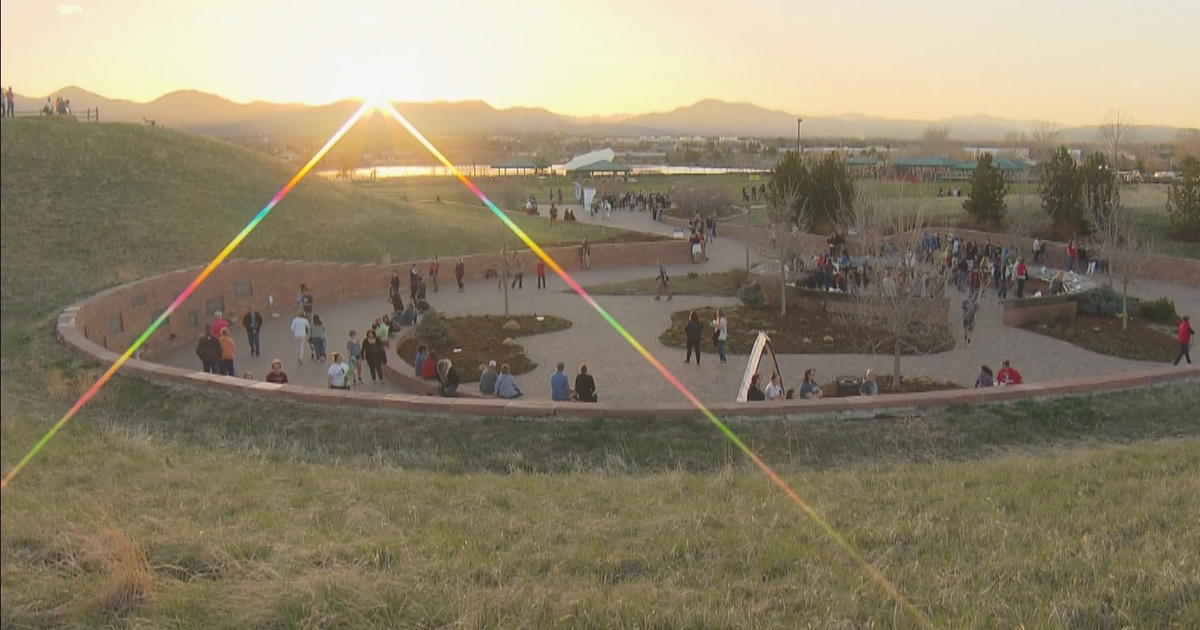A Tour Inside Colorado's Jurassic Park
FREMONT COUNTY, Colo. (AP) - Picture a great, tropical river running to a huge inland sea in, of all places, the scrubby, arid hills north of Canon City, studded with pinyon pines and cactus.
It takes a little imagination.
But 65 million years ago, huge carnivorous Allosaurus lived here. Spiny, plated Stegosaurus lived here. Long-necked Apatosaurus lived off plants and vegetation here.
The area known as Garden Park is one of the richer dinosaur fossil beds in the U.S. Fossil hunters have been pulling bones from the ground here since 1877. In the 1880s, two paleontologists, whose feud captured the world's attention, raced against each other to recover bones of 15 dinosaur species, nine of which were new to scientists.
This spring, the U.S. Bureau of Land Management expanded the National Natural Landmark boundary of the area from 40 acres to 3,200 acres, to recognize the history and protect the landscape. The designation is reserved for "sites that illustrate the nation's geological and biological history" and "strengthen the public's appreciation of America's natural heritage." There are 12 other such sites in Colorado, including Garden of the Gods.
But unlike Garden of the Gods, few people in Colorado Springs have heard of Garden Park, though it's only a 45-minute drive.
Ranchers long knew about the bones in the hills but, before knowledge about dinosaurs was widespread, thought little of them.
The earth swallowed the bones of the great dinosaurs, and the geologic uplift that formed Pikes Peak and the Rockies exposed them to the elements through erosion.
In 1877, Canon City school teacher Oramel Lucas stumbled across some strange rocks while hunting deer. Further examination revealed a bone 3 feet long and 6 inches in diameter. He told a Cano City newspaper it was "the fossil remains of a carnivorous and herbivorous giant."
And so what was known as "The Bone Wars" came to Colorado.
The two most prominent paleontologists of the day were Othniel Charles Marsh and Edward Drinker Cope, former friends who had become fierce rivals. They raced each other around the West in a game of one-upmanship that captivated the national press.
Lucas wrote both about his finding. Cope hired Lucas, paying 10 cents per pound of fossils shipped east to Philadelphia. Marsh never responded, but when he heard about his rival's deal, he sent an agent to persuade the teacher to switch sides. When that failed, Marsh hired nearby farmer Marshall Felch as his local digger.
The same year, fossils were found near Morrison. The bones coming from Colorado were the largest, most complete ever found, and paleontologists began to understand the sheer size of the monsters that once roamed the planet. Drawings of the "thunder lizards" from skeletons captivated the public.
Cope's quarries operated until 1884. Work ended in Marsh's quarries by 1888. The rivalry continued until Cope died in 1897, a story of sabotage, political gamesmanship and espionage that launched America's fascination with dinosaurs but left both men largely penniless.
It's a story that continues to fascinate more than a century later. Cable network HBO recently announced it will make a film called "Bone Wars," with James Gandolfini as Marsh and Steve Carell as Cope.
Other diggers came and went, with renewed interest every couple of decades resulting in more dinosaur finds. In 1993, a Fort Carson Chinook helicopter was used to transport what was then the most complete stegosaurus ever found, the last major find at Garden Park.
Bones from the area can be found in museums from New York to Cleveland to Denver, and once again in Canon City. The Dinosaur Depot, run by the Garden Park Paleontology Society, closed in March, leaving no place to display replicas and some original fossils from the area. In May, the exhibit opened at a temporary location, the Royal Gorge Regional History Center, which makes a great first stop on an exploration into Garden Park history.
In Canon City, take Shelf Road (County Road 9) north of town. The first stop is in about six miles, at a picnic area on the right, where in the 1950s Edwin Delfs excavated fossils for the Cleveland Museum of Natural History. Two-tenths of a mile to the north is the trailhead for Marsh's quarry, on the left. A quarter-mile trail leads to the quarry and two overlooks.
More than two dozen digs have been done in the area, but the rest are tougher to find. To visit the site where Cope dug Apatosaurus, often incorrectly called brontosaurus, from the hillside take a 10-minute drive up a four-wheel-drive road and a 15-minute hike on an unmarked trail. It would be tough for someone unfamiliar to find these many unsigned quarries.
"Our dinosaurs are gone and we have the cool stories of how they were all discovered," said BLM geologist Melissa Smeins.
But are all the fossils gone?
In 1998, Colorado Springs teenager Tony Moreno was on a school trip in the fossil area when, kicking the ground in boredom, he found what turned out to be a petrified tree more than 100 million years old. Known as "Tony's Tree," it's on display at the Canon City museum.
It's illegal to remove fossils unless you have a permit, issued only to collectors affiliated with a fossil repository, university or museum. Smeins said digs still occur in the area every few years.
So does she think these hills have more bones to reveal?
"I dream big. I think there are and they're all under that big enormous hill. It's really hard to get that hill out of the way," she said, pointing to the cliff side that once housed the buildings of the Marsh quarry.
"It's like a Candyland. You're like, 'Oh, I could find fossils here.' I am always looking."
- By R. SCOTT RAPPOLD, The Gazette
(© Copyright 2013 The Associated Press. All Rights Reserved. This material may not be published, broadcast, rewritten or redistributed.)



